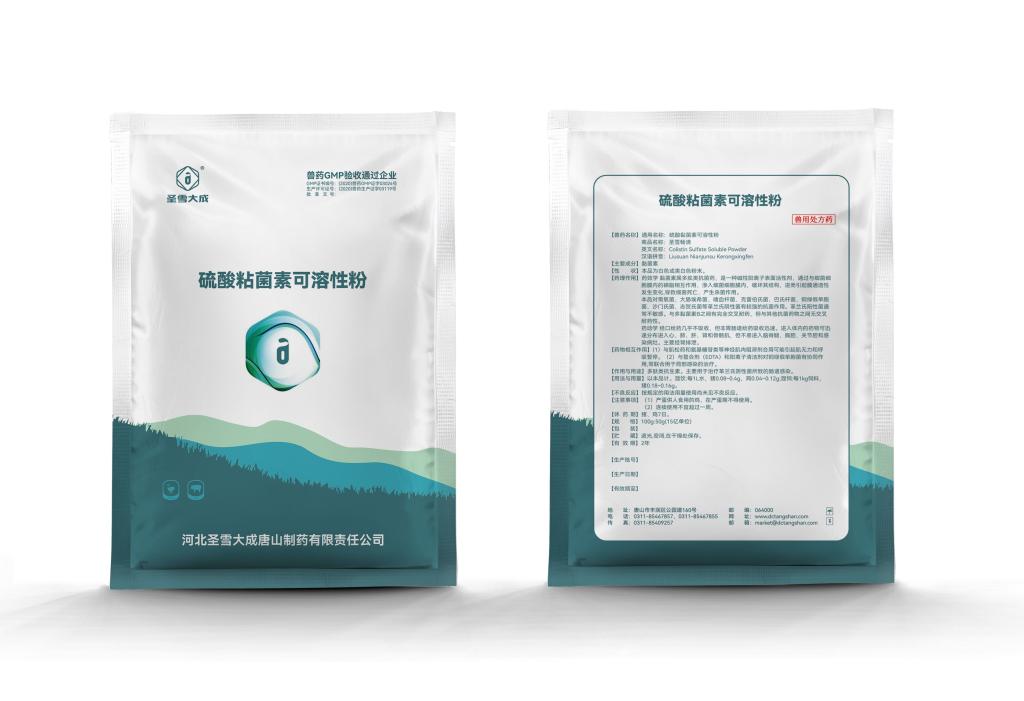Tel:+8618231198596

News
 CONTACT
CONTACT
 CONTACT
CONTACT
- Linkman:Linda Yao
- Tel: +8618231198596
- Email:linda.yao@dcpharma.cn
- Linkman:CHARLES.WANG
- Department:Overseas
- Tel: 0086 0311-85537378 0086 0311-85539701
News
Stakeholder Perspectives: Colistin Sulfate Soluble Powder in the Agricultural Supply Chain.
TIME:2024-01-16
Introduction:
The agricultural sector plays a crucial role in ensuring food security and meeting the demands of a growing global population. However, the use of antibiotics in livestock, including colistin sulfate soluble powder, has raised concerns about the development of antimicrobial resistance (AMR) and its potential implications for human health. This article aims to provide a comprehensive analysis of stakeholder perspectives on the use of colistin sulfate in the agricultural supply chain.
Colistin Sulfate: Overview and Current Usage in Agriculture
2.1 Mechanism of Action and Veterinary Applications:
This section provides an overview of colistin sulfate, its mechanism of action, and its common applications in veterinary medicine. Understanding its role in treating bacterial infections in animals sets the stage for discussing its use in agriculture.
2.2 Current Practices in Agriculture:
A detailed exploration of the current practices involving colistin sulfate in agriculture, including its use in livestock and poultry farming, is essential. This section examines the reasons behind its adoption, such as disease prevention and growth promotion, and the associated challenges.
Stakeholder Perspectives:
This section delves into the perspectives of key stakeholders involved in the agricultural supply chain, including farmers, veterinarians, regulatory bodies, and public health advocates.
3.1 Farmers' Perspectives:
Farmers play a pivotal role in the decision to use colistin sulfate in agriculture. This section explores their perspectives on the benefits, challenges, and ethical considerations associated with the use of colistin sulfate in livestock and poultry farming.
3.2 Veterinarians' Insights:
Veterinarians are instrumental in prescribing and administering antibiotics in the agricultural context. This section discusses their perspectives on the efficacy of colistin sulfate, alternatives available, and the ethical considerations in balancing animal health with antimicrobial resistance concerns.
3.3 Regulatory Bodies and Guidelines:
Regulatory bodies play a crucial role in setting guidelines and regulations for antibiotic use in agriculture. This section explores the perspectives of regulatory agencies on colistin sulfate, including their efforts to mitigate AMR risks and promote responsible use.
3.4 Public Health Advocates' Concerns:
Public health advocates often express concerns about the potential transfer of antibiotic resistance from animals to humans. This section discusses their perspectives on the risks associated with the use of colistin sulfate in agriculture and potential public health implications.
The Global Landscape: Variances in Regulation and Practices
This section explores the global landscape of colistin sulfate use in agriculture, highlighting variations in regulatory approaches, farming practices, and public awareness. Understanding these differences provides insights into the challenges and opportunities for harmonizing regulations and promoting responsible use worldwide.
Alternatives and Innovations:
Given the concerns surrounding colistin sulfate, this section explores alternative approaches and innovations in agriculture that aim to reduce reliance on antibiotics. From probiotics to improved farm management practices, stakeholders are exploring various strategies to promote animal health without contributing to AMR.
Future Directions and Challenges:
As the discourse around antibiotic use in agriculture evolves, this section discusses potential future directions, challenges, and opportunities. It explores emerging technologies, policy initiatives, and collaborative efforts that could shape the future of antibiotic use in the agricultural supply chain.
Conclusion:
In conclusion, the use of colistin sulfate soluble powder in the agricultural supply chain is a complex and multifaceted issue with diverse stakeholder perspectives. Balancing the need for animal health with the risks of antimicrobial resistance requires a collaborative and informed approach. This article provides a comprehensive overview of the current landscape, stakeholder perspectives, and potential pathways forward in addressing the challenges associated with colistin sulfate use in agriculture.
- Tel:+8618231198596
- Whatsapp:18231198596
- Chat With Skype







